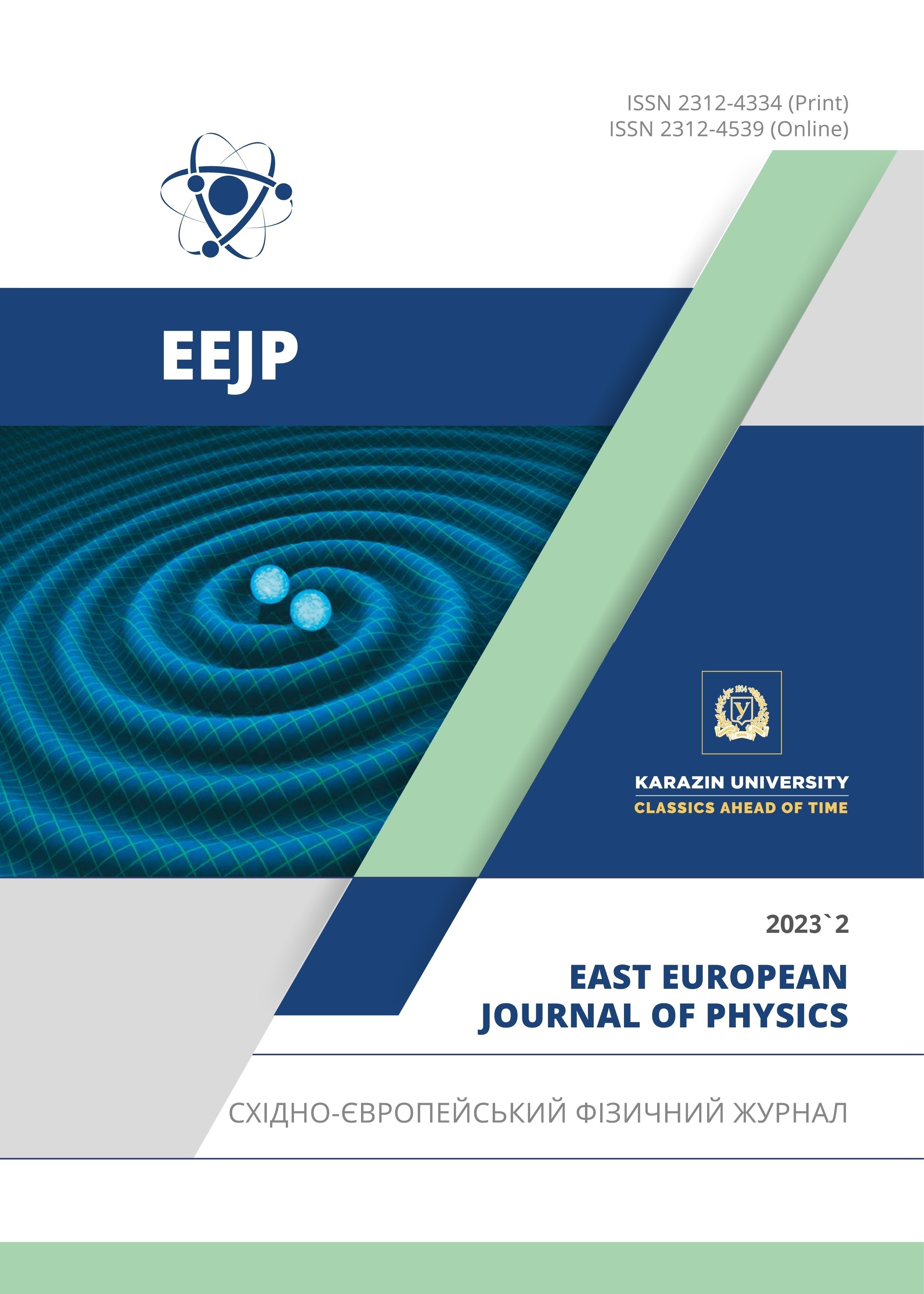Problems of Masking and Anti-Reflective SiO2 in Silicon Technology
Abstract
The article examines the problems of thermal oxidation of silicon. Oxidation plays an important role in planar technology, which in turn is the basis of the technology of silicon integrated circuits, photodetectors and other solid-state electronics. During our production of silicon p-i-n photodiodes, a number of systematic types of defects and deterioration of product parameters caused by the degradation of masking or anti-reflective coatings during the manufacturing process were observed. A decrease in the insulation resistance of responsive elements in multi-element photodiodes was observed, which contributed to the increase of dark currents. A decrease in the responsivity of the products due to the degradation of the thickness or structure of the anti-reflective coating during technological operations, etc., was also revealed. It was established that the reason for the decrease in insulation resistance is the formation of inversion layers at the Si-SiO2 interface, the presence of which can be detected when measuring CV-characteristics. It was also established that chemical treatment of substrates with SiO2 in boiling acid solutions helps to reduce the thickness of the oxide. To avoid deviation of the thickness of the film from the condition of minimum reflection, it is necessary to grow a thicker layer of anti-reflective coating. It is noted that when etching the oxide during photolithography or when removing the PSG/BSG in hydrofluoric acid, it is not permissible to remove the cassette with plates from the solution for a long time, as this leads to uneven etching of the film due to the flow of the herb on the surface of the substrate. The causes of defect formation in Si and SiO2 during oxidation are given. Thus, with improper mechanical and chemical processing of the plates, cristobalite inclusions may form in the film during oxidation. Cristobalite has a higher density than quartz glass, and the boundaries between amorphous regions and denser crystalline regions represent voids, which can be filled both by impurities from the surface and by the diffusant in the diffusion process. Also, during oxidation in silicon, packing defects are often formed. Centers of defect genesis can be mechanical damage to the plate surface or growth defects.
Downloads
References
M. McClish, R. Farrell, R. Myers, F. Olschner, G. Entine, and K.S. Shah, Nuclear Instruments and Methods in Physics Research Section A: Accelerators, Spectrometers, Detectors and Associated Equipment, 567(1), 36 (2006). https://doi.org/10.1016/j.nima.2006.05.055
A. Rahim, J. Goyvaerts, and B. Szelag, IEEE Journal of Selected Topics in Quantum Electronics, 25(5), 1 (2019). https://doi.org/10.1109/JSTQE.2019.2915949
S. Zhang, Y. Yao, and D. Hu, Energies, 12(6), 1168 (2019). https://doi.org/10.3390/en12061168
G. Gerlach, and K. Maser, Advances in condensed matter Physics, 2016, 7545632 (2016). https://doi.org/10.1155/2016/7545632
S.W. Glunz, F. Feldmann, Solar Energy Materials and Solar Cells, 185, 260 (2018). https://doi.org/10.1016/j.solmat.2018.04.029
A.A. Prishya, L. Chopra, Materials Today: Proceedings, 72, 1471 (2023). https://doi.org/10.1016/j.matpr.2022.09.348
O.V. Aleksandrov, and A.I. Dus, Physics and technology of semiconductors, 45(4), 474 (2011). (in Russian)
H. Mizobata, Y. Wada, M. Nozaki, Applied Physics Express, 13(8), 081001 (2020). https://doi.org/10.35848/1882-0786/aba320
J. Vanhellemont, and E. Simoen, Journal of the electrochemical society, 154(7), H572 (2007). https://doi.org/10.1149/1.2732221
M.S. Kukurudziak, Physics and Chemistry of Solid State, 23(4), 756 (2022). https://doi.org/10.15330/pcss.23.4.756-763
C.T. Sah, H. Sello, and D.A. Tremere, J. Phys. Chem. Solids, 11, 288 (1959). https://doi.org/10.1016/0022-3697(59)90229-X
S.B. Khan, S. Irfan, Z. Zhuanghao, and S.L. Lee, Materials, 12(9), 1483 (2019). https://doi.org/10.3390/ma12091483
F.A. Abdullin, V.E. Pautkin, E.A. Pecherskaya, A.V. Pecherskiy, D.V. Artamonov, and K.O. Nikolaev, in: 2019 International Seminar on Electron Devices Design and Production (SED), IEEE, (2019), pp. 1-4. https://doi.org/10.1109/SED.2019.8798467
M. Kukurudziak, Radioelectronic and Computer Systems, 105(1), 92 (2023). https://doi.org/10.32620/reks.2023.1.07
V.M. Lytvynenko, I.M. Vikulin, Bulletin of the Kherson National Technical University, (1), 46 (2018). (in Ukrainian)
Yu. O. Kruglyak, and M.V. Strikha, Sensor Electronics and Microsystem Technologies, 16(2), 5 (2019). https://doi.org/10.18524/1815-7459.2019.2.171224 (in Ukrainian)
M.M. Atalla, E. Tannenbaum, and E.J. Scheibner, Bell System Tech. J. 38, 749 (1959).
M.S. Kukurudziak, and E.V. Maistruk, in: 2022 IEEE 3rd KhPI Week on Advanced Technology (KhPIWeek) (IEEE, Kharkiv, 2022), pp. 1-6. https://doi.org/10.1109/KhPIWeek57572.2022.9916420
H. Chen, K. Morita, X. Ma, Z. Chen, and Y. Wang, Solar Energy Materials and Solar Cells, 203, 110169 (2019). https://doi.org/10.1016/j.solmat.2019.110169
M.S. Kukurudziak, Journal of nano- and electronic physics, 14(1), 01023 (2022). https://doi.org/10.21272/jnep.14(1).01023
A.V. Fedorenko, Technology and design in electronic equipment, 17(3–4), 17 (2020). https://doi.org/10.15222/ TKEA2020.3-4.17 (in Ukrainian)
M.S. Kukurudziak, Surface Chemistry, Physics and Technology, 14(1), 42 (2023). https://doi.org/10.15407/hftp14.01.042 (in Ukrainian)
K.L. Milton, T.R. Durrant, T. Cobos Freire, and A.L. Shluger, Materials, 16(4), 1382 (2023). https://doi.org/10.3390/ma16041382
F. Dai, and L. Zhang, Materials Science in Semiconductor Processing, 153, 107187 (2023). https://doi.org/10.1016/j.mssp.2022.107187
R. Tognato, Physica Status Solidi, 98(2), 681 (2022). https://doi.org/10.1515/9783112501825-048
T. Middelmann, A. Walkov, G. Bartl, and R. Schödel, Physical Review B, 92(17), 174113 (2015). https://doi.org/10.1103/PhysRevB.92.174113
B. Son, Y. Lin, K.H. Lee, Q. Chen, and C.S. Tan, Journal of Applied Physics, 127(20), 203105 (2020). https://doi.org/10.1063/5.0005112
M.S. Kukurudziak, Journal of nano- and electronic physics, 14(4), 04015 (2022). https://doi.org/10.21272/jnep.14(4).04015
Copyright (c) 2023 Mykola S. Kukurudziak

This work is licensed under a Creative Commons Attribution 4.0 International License.
Authors who publish with this journal agree to the following terms:
- Authors retain copyright and grant the journal right of first publication with the work simultaneously licensed under a Creative Commons Attribution License that allows others to share the work with an acknowledgment of the work's authorship and initial publication in this journal.
- Authors are able to enter into separate, additional contractual arrangements for the non-exclusive distribution of the journal's published version of the work (e.g., post it to an institutional repository or publish it in a book), with an acknowledgment of its initial publication in this journal.
- Authors are permitted and encouraged to post their work online (e.g., in institutional repositories or on their website) prior to and during the submission process, as it can lead to productive exchanges, as well as earlier and greater citation of published work (See The Effect of Open Access).








